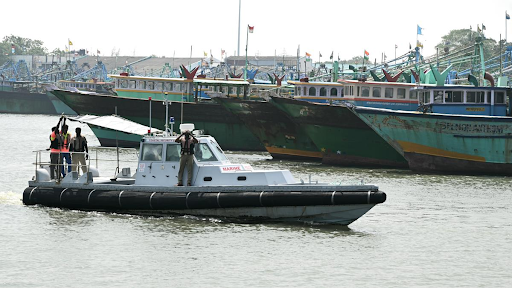Description

Disclaimer: Copyright infringement not intended.
Context:
India has tested its first indigenous micro-missile system designed to take on the threat of swarm drones.
About Bhargavastra
- Bhargavastra is India's first micro-missile system developed in India to counter drone swarm threats.
- Developed by: Economic Explosives Ltd.
Features
- It is an anti-drone system capable of detecting small aerial vehicles at a distance of more than 6 km and destroying them using guided micromunitions.
- The system can launch more than 64 micro-missiles simultaneously.
- It is capable of rapid deployment on a mobile platform and can engage targets at distances exceeding 2.5 km.
- Designed for operations in various terrains, including high-mountain areas, the system meets specific military operational requirements.
Importance
- The system provides the Indian Army with a cost-effective solution to combat large-scale drone attacks.
- It also offers reliable defense against small drones in swarm attacks.
Swarm Drones
- SWARM stands for "Smart War-Fighting Array of Reconfigured Modules".
- Drone swarm technologies coordinate at least three and up to thousands of drones to perform cooperative missions with limited need for human attention and control.
- For example, an aerial swarm of drones could potentially help control a forest fire, assess damage, find access points, and suppress the fire by raining fire-fighting liquid on it—all with minimal human guidance.
- Swarms of drones can be more efficient and healthier than single drones for certain applications because swarms can perform different tasks in parallel without human supervision.
- And they can continue to operate if individual drones become inoperable.
- Drone swarms integrate advanced computer algorithms with local sensing and communication technologies to synchronize multiple drones to reach a target.
- Drone swarms can use different methods of command and control, including pre-programmed missions with specific predefined flight paths, centralized control by a ground station or a single pilot drone, or distributed control where drones communicate and cooperate based on shared information.
Source:
https://economictimes.indiatimes.com/news/defence/bhargavastra-micro-missiles-ready-to-fire/articleshow/117245312.cms?from=mdr
|
PRACTICE QUESTION
- With advancements in defense technologies, India is developing its indigenous micro-missile systems. Discuss the strategic significance of micro-missile systems in modern warfare. Also, analyze the challenges India may face in the development and deployment of such systems in the context of its security environment. (250 words)
|










